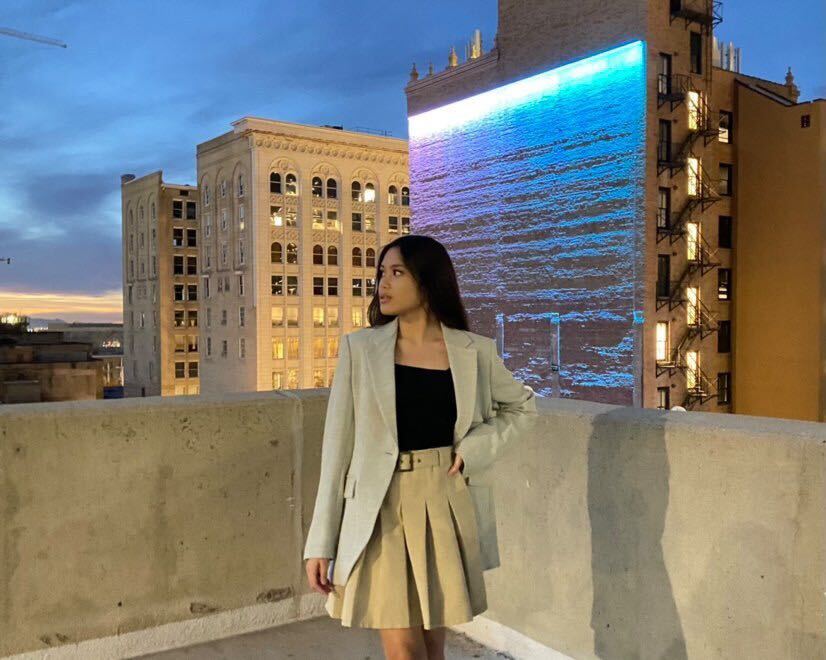Student Content Creators at the U: Finding a Niche and Developing an Audience
April 7, 2022
Among the University of Utah students who run their own YouTube and TikTok channels, there are some who have thousands of subscribers and video views over 1,000.
U student Jada Kali P. Stelmach started documenting her time in college to look back on after graduating, and to share her college experience, struggles and lifestyle as a first-generation, pre-med student.
Stelmach’s YouTube channel has 3,000 subscribers, and some of her videos have more than 25,000 views.
“My channel was originally focused on makeup and fashion,” Stelmach said. “I was not consistently uploading videos when I uploaded my first YouTube video, but I started to take it more seriously in college and tried to upload every week.”
According to Stelmach, she spends at least one to four hours editing videos. She said her favorite part of the editing process is finding new, creative ways to edit.
“The vlogging aspect is easy but editing takes up the most time,” Stelmach said. “I usually spend a whole week editing from putting together clips, searching through a music library, adding effects, graphics and any other micro details.”
Stelmach said the essentials of being a student creator are timing and engagement. On Instagram and YouTube, there is a time frame when people are most active, from the time of day to the day of the week.
“On Instagram, I like to do story updates where I share my to-do list for the day, what I’m doing currently or even what I’m wearing or listening to,” she said. “I learned that relatability is important as a creator because your audience wants to get to know you as a person that they can share the same experiences with.”
On YouTube, Stelmach tries her best to respond to all the comments, even if they are on an old video.
“One thing I try not to do is continuously check statistics,” she said. “Statistics can be a good thing because it can give you a good measurement of growth, but it can also hurt your self-esteem at times.”
As Stelmach is both a student and a creator, her biggest difficulty is finding balance.
“I am now in my fourth year of college and I have little time to make videos and content, because I have more responsibilities and [am] more involved around campus,” Stelmach said.
Stelmach will finish college in a year and hopes to start documenting and sharing her post-college experience and life transition.
“My goal is not about the subscriber or follower count,” she said. “I want to share my experiences and struggles to show that students [and] people are not alone in their journey as they navigate through college, their careers and life.”
She said she wants to inspire someone and create a community where students can also share their experiences and help motivate each other.
“Create content because you love to create and the content that you make,” she said. “People will love you for who you are and what you do, and you’ll find growth when you are yourself.”
She also said it will take time to find someone’s own style or niche, especially in a world filled with trends.
Creating and Marketing in a Changing World
Sebastiaan Gorissen, a doctoral candidate in the Department of Communication at the U, said the videos people watch, the pictures and posts they “like,” and the creators to which they subscribe all produce information.
According to Gorissen, this information — as small, invisible or insignificant as it may seem — has to be recognized as its own genre of digital content. Within the contemporary digital media environment of social media platforms, websites and services, people in the world are all digital content producers.
“As an instructor with the Department of Communication, I have been incredibly fortunate to work directly with some of the student creators, as they made their content part of the portfolios they built for classes such as Media Writing and Introduction to News Writing,” Gorissen said.
The university does offer some classes related specifically to digital content production.
Gorissen said students’ creator activities should be championed across campus, and as an instructor, he would love to see expanded opportunities for students to hone their skills and develop a critical understanding of what it means to be a digital content creator on the contemporary internet.
“I would recommend creators to look for opportunities to incorporate their content into the classes they are taking,” Gorissen said. “While not always explicitly stated, most instructors would be more than happy to connect their course assignments to their students’ passions.”
Due to the relative ease with which many people are able to create their own content, the nature of being a celebrity has significantly changed.
“The careers of people like creators are built by continuously producing the types of content with which people want to engage,” Gorissen said.
He gave a piece of advice that student creators should focus their attention on consistently creating content they would want to consume. Famous creators’ success may not be immediate, and they may never reach the heights of the biggest stars of YouTube or TikTok, but there is an audience for every type of content, if this content is created with passion and intent.
“The job market is rapidly changing, and increasingly fewer people are building their careers within a single corporation or organization,” Gorissen said. “Rather, it is becoming increasingly more common for people to work for a different corporation or organization every few years, or work in a freelance capacity for multiple corporations and organizations at once.”
According to Gorissen, student creators really need to learn how to market themselves — their content will remain undiscovered if they do not work tirelessly to find their audience.
“Student creators should pay close attention to the ways in which creators build and maintain their audiences on the internet, and keep an ear to the ground to learn about new platforms, websites and services that can help them reach new followers, supporters and collaborators,” he said.








